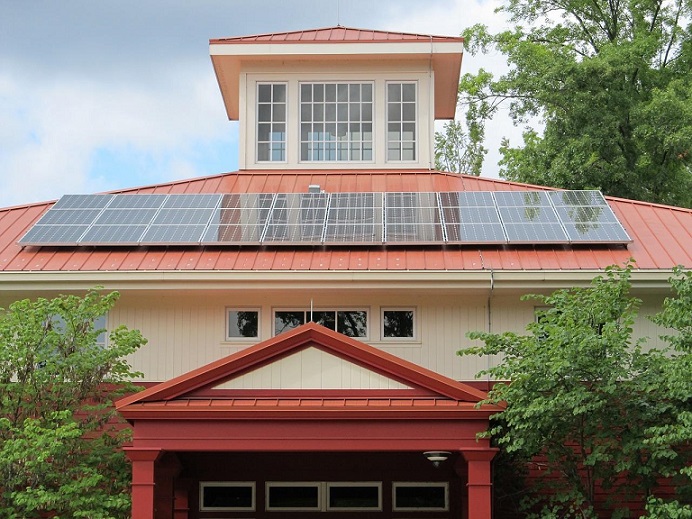Green building has come a long way over the last couple of years. People used to think that it was nothing more than a passing trend that involves installing solar panels and energy-efficient lights. Today, however, we know that green building refers to the process of designing, constructing, maintaining and using a home in a way that is environmentally responsible and resource-efficient. Green homes use less energy to operate when compared to traditional housing solutions and can save you a significant amount of money you would normally be wasting on electricity bills. Here are some of the factors you need to take into account when constructing an eco-friendly building.
Location and orientation
When choosing a location for your eco-friendly home, it’s important to consider the impact it will have on the local ecosystem and surrounding wildlife. Orientation is crucial, which is why you want to avoid locations with large trees and tall building or objects nearby. They will limit the amount of sunlight reaching the house and you will have to waste more energy keeping it warm. This also affects the amount of daylight you receive, prompting you to turn on the light earlier and waste even more energy. Even the solar panels are affected, making them operate far below their optimal efficiency.
Size of the house
Size does matter, at least when it comes to eco-friendly design. A smaller house will always be more energy-efficient when compared to a larger one. During the construction, you will need to excavate less land and use fewer building materials. Once constructed, a smaller house will require less energy to keep it warm during winter and cool during the summer. This does not mean living in a matchbox house, but rather limiting the amount of empty and otherwise unused space you will have to heat or cool, depending on the seasons.
Eco-friendly materials
The vast majority of green homes are constructed using recycled and reused materials. They are far cheaper than regular materials, which is ideal for those working with limited budgets. You can use recycled steel, aluminum, glass and even plastic composites. Wood can be repurposed and used on doors, windows, and countertops. Concrete is a key part of sustainable development, however, pouring without an appropriate TDK formwork is a safety hazard and should be avoided, especially when building tall walls.
Doors and windows
Besides being made using repurposed and recycled materials, it’s important for doors and windows to form an airtight seal when closed. This prevents air from escaping the house and reduces the amount of wasted energy. Dual or triple pane windows will provide you with the optimal level of insulation and low-emittance panes will block UV rays that are not only harmful to humans but can also damage furniture and other belongings.
Solar panels
Solar panels are an excellent source of clean, low-cost energy. Constructing a green home from scratch puts you in a unique opportunity to incorporate solar panels into the design itself. They are usually placed on the roof facing east to west in order to maximize sun exposure. The energy they generate can be used for anything, from running appliances to heating water and any excess electricity you produce can easily be sold back to the grid for a profit.
As you can see, green design is more than slapping a couple of solar panels and calling it a day. It is a process that details how homes need to be designed and constructed in a way that energy-efficient and environmentally-friendly. A green home will help you reduce your energy usage, save a lot of money and make a positive impact on the planet as well.
SHARED ON HEALTHY HAPPY GREEN & NATURAL BLOG HOP!




Pingback: Sustainabliity: How to Combine Luxury and Eco-Friendliness
Pingback: 5 Reasons to Support Eco-Friendly Moving Services
Pingback: How Far Would You Go to Live For Less?
Thank you for this post! It is very helpful for considering some important eco-friendly principles of constructing a home that is healthy for the earth and for us!
Hi Jennifer,
You are quite welcome! I totally agree that it is very important to have eco-friendly principles when constructing your home. If we all do our part we can make healthy changes in our environment and lives. Thanks for stopping by and commenting. Have a healthy, happy & blessed day.